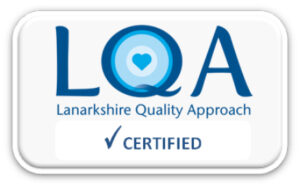Information on Ulnar Collateral Ligament repairs to the Thumb
Information for patients
NHS Lanarkshire Hand Therapy Department
PIL.ULNCOL.21_24721.L
You have injured one of the ligaments in your thumb that helps to keep your thumb in a stable position and helps with pinching and gripping movements. You will need to protect your thumb joint to allow the ligament to heal and become stable again. If the ligament is completely torn, it may have moved into a position where it is unlikely to heal on its own and this could mean you would find it difficult to do normal day-to-day things with your hand.
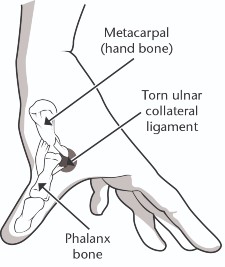
If your ligament is partially torn, then your hand therapist will make you a splint to keep the metacarpophalangeal joint (MCPJ) still for about 6 weeks. The metacarpophalangeal joint is the large joint at the bottom of your thumb where it meets the hand bones .You might find it takes several weeks for your thumb to become more flexible and regain the strength you had before.
If the ligament is completely torn, then you will probably have an operation to repair it. After the operation you will then have about six weeks of wearing a splint and having hand therapy.
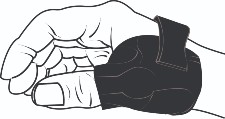
You will need to wear the splint at all times although you can take it off for a short time to do a protected wash. This is where you wash the hand without moving the thumb too much and or do gentle movements, (see below for examples of these). You can look after your scar, as needed, but you should not force your thumb joint or do any heavy lifting at this stage following your operation. This allows your body to produce scar tissue to heal the ligament, even if you’ve had an operation to repair it.
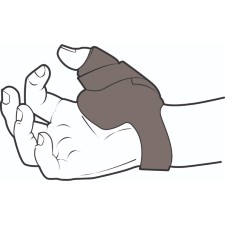
1. Bend and straighten the tip of the thumb within the splint.
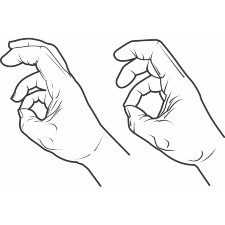
2. Remove your splint and gently bend your thumb in the direction of your little finger. Do not force this movement or push it with the other hand.

3. Move your wrist in a circular movement in one direction and then the other.
Complete 10 repetitions of these exercises 3-4 times per day.
From week 6:
Thumb strengthening exercises
1. Action: Place your thumb in a relaxed position. Whilst the other hand is resisting the movement, move the thumb up. Repeat this in a downward and sideways resisted movement.
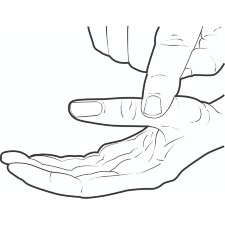
2. Action: Place a rubber band around your hand, crossing around the middle of your thumb and move the thumb away from your palm.
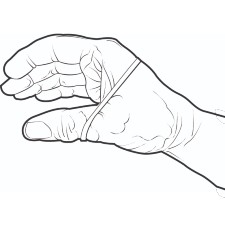
3. Action: With the little finger side of the hand resting on the table, move the thumb up towards the ceiling, keeping the tip of the thumb bent.
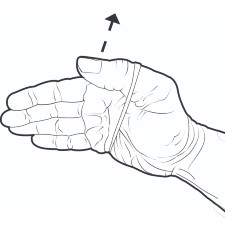
If you have any questions then please call your hand therapist on:
University Hospital Monklands: 01698 752088
University Hospital Hairmyres: 01355 585429
If you have a wound and it becomes smelly, red or suddenly very painful, contact the Orthopaedic Unit or your GP to rule out a wound infection. In an emergency then please go to the nearest Accident & Emergency department.
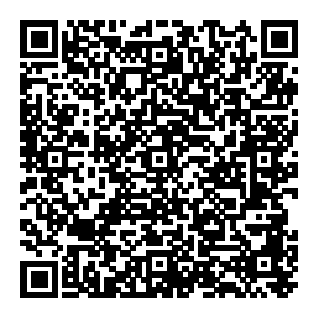
Pub. date: November 2021
Review date: November 2023
Issue No: 01c
Reference: PIL.ULNCOL.21_24721.L
If you need this information in another language or format, please e-mail:
